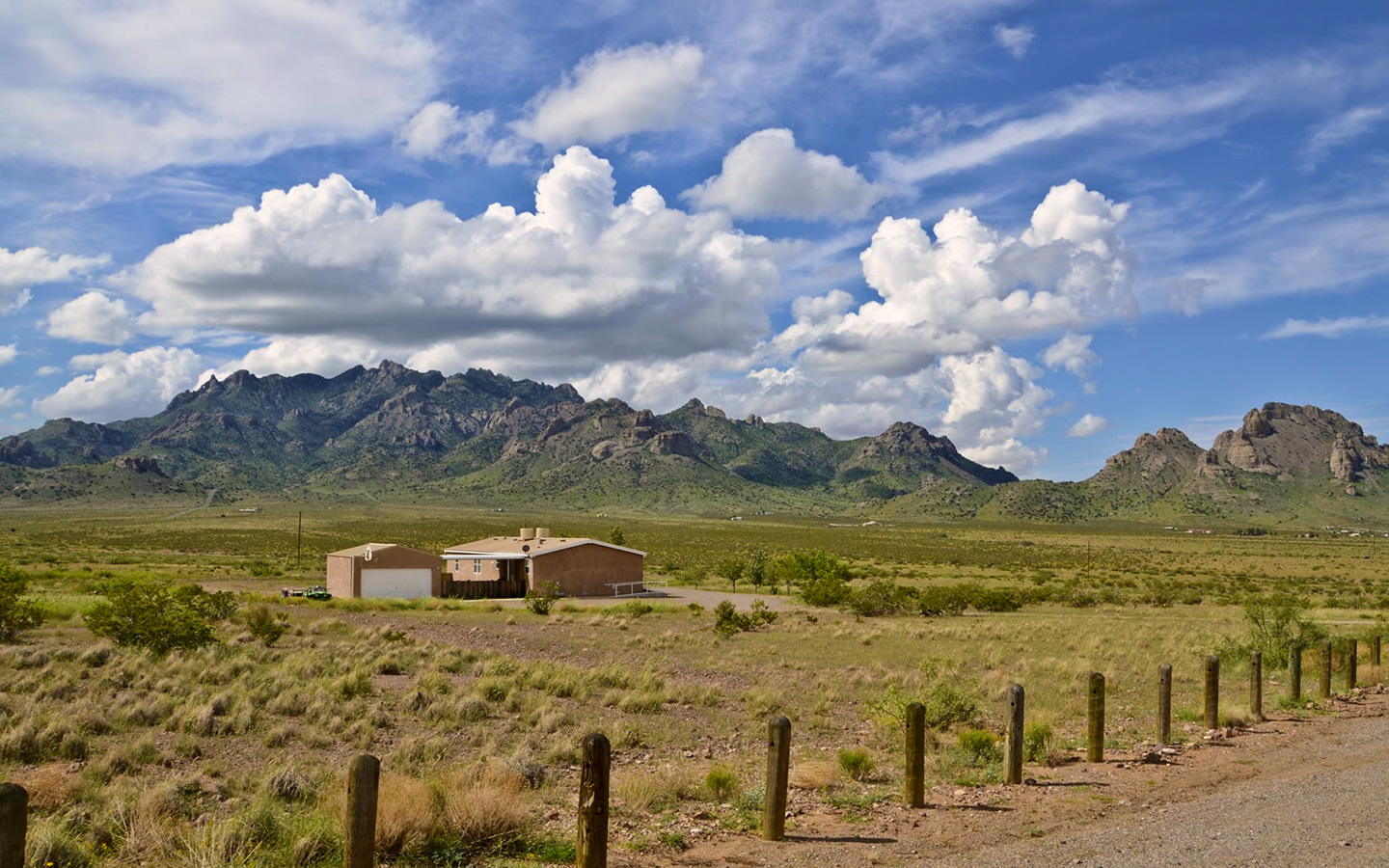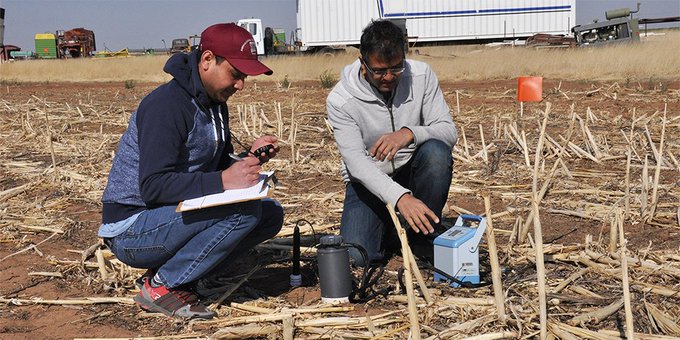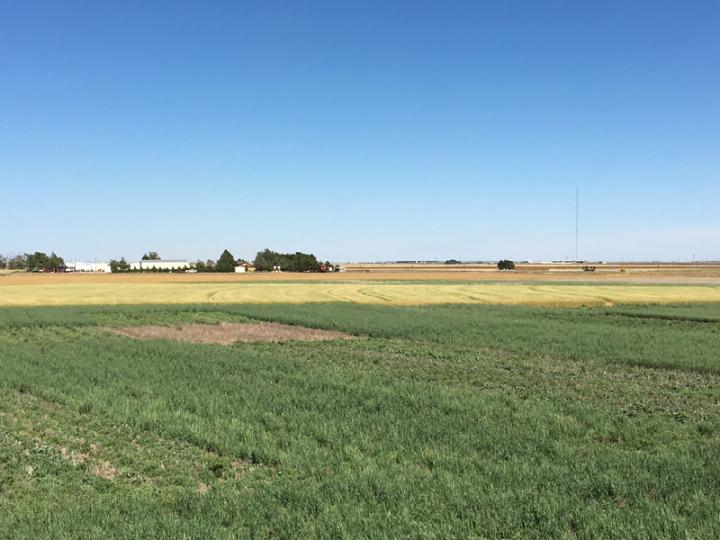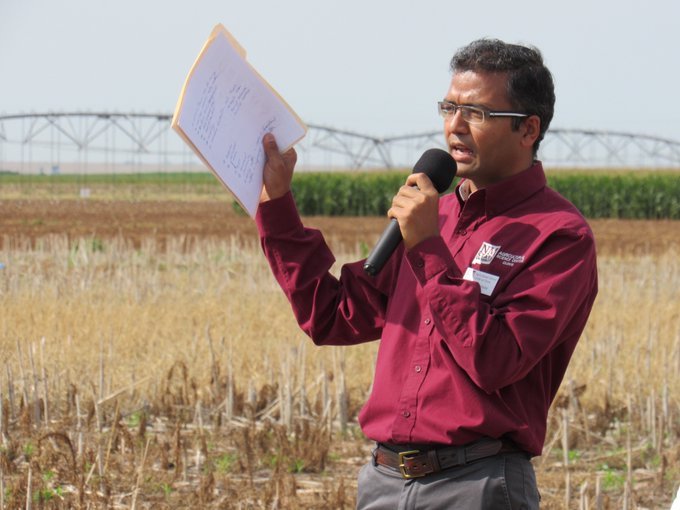
How to increase soil health & productivity in two years
New Mexico Cover Crop Research
We’ve all heard about how cover crops can improve soil health and productivity. But, how does that translate in New Mexico? Ask Rajan Ghimire, a soils researcher at New Mexico State University Agricultural Science Center at Clovis, New Mexico.
New Mexico has unique challenges for farming, including how to add cover crops in the farming cycle. But, because of our hot, arid weather, with unpredictable, and usually low, rainfall, cover crops are even more important to increase soil biology that can help retain any moisture that falls or is gained through irrigation. With water the key limiting factor in New Mexico, cover crops can help maximize this resource through increased soil organic matter and other soil health indicators.

Ghimire has been studying cover crop mixes in New Mexico since 2015, including legumes such as pea and hairy vetch, or grassy crops like oats and barley to see how they improve soil organic matter. These covers also help protect the soil from wind and water erosion and feed the soil biology so that less external inputs are needed. Specifically, cover crops tested were pea, oat, canola as individual cover crops, as well as combinations like: pea and oat; pea and canola; pea, oat and canola; and pea, oat, canola, hairy vetch, forage radish, and barley (SSM or diverse-mix). They also had a fallow area to compare. They planted the cover crops in February and terminated with herbicide in 85-90 days later in May.
What Ghimire’s research shows is that cover crops grown in New Mexico can increase the soil biology in as little as two years. To determine soil health, the researchers measured soil carbon dioxide emissions (because respiration of soil microbes comes in the form of carbon dioxide emissions), bacterial and fungal populations and soil enzymes. The carbon dioxide emissions were higher in test plots with cover crops compared to fallow plots. Research also showed more fungal abundance, and enzyme activities associated with soil organic matter and nutrient cycling. Researchers looked at a variety of cover crops as well as seeing how they performed over two growing seasons.

By studying microbial community structure and functions on these cover crop plots, the researchers showed that total microbial community size and fungal community were similar between soils under oats and diverse-mix, and were 31% and 41% greater than fallow. The mycorrhizal fungi were 84% greater under oats than fallow. The enzyme activities was also 44% more with diverse-mix cover crops than fallow in 2018.
Additional outcomes from this biological activity includes improved soil structures and increased available nutrients, like nitrogen, that plants need which reduces dependency on external inputs which decreases expenses. Some of the cover crops increase the storage of soil carbon, while others fix nitrogen, and yet others can send their roots further into the soil profile to access water and nutrients. That is why it is important to have a mix of cover crops depending on the needs of particular crop fields or the cash crops being planted in the crop rotation.

Ghimire and his team also evaluated how spring‐planted cover crops affected soil water content, soil organic carbon, soil total nitrogen, potentially mineralizable carbon, potentially mineralizable nitrogen, and available phosphorus. Potentially mineralizable carbon and nitrogen are easily decomposable fractions of organic matter that can release nitrogen and support crop production in the year/season following cover cropping.
What the research showed was that the cover crop biomass was 33 to 142% greater with oat; pea and oat; pea and canola; pea, oat and canola, and diverse mix than just a cover of pea or canola. The soil water content was also 2 and 4% greater in diverse mix and pea, oat and canola mixed cover crops than fallow at wheat planting in October. The soil organic carbon and soil total nitrogen contents were 18 to 20% greater with oat than pea and canola cover crops. Given these outcomes and the need for more water holding capacity in arid soils, oat and its mixture with other cover crops seem particularly well suited for improving soil health and resilience in New Mexico.
Likewise, given these benefits and the greater likelihood of germination on irrigated grounds, cover crops can outweigh the risk for farmers transitioning to this practice. In particular, breaking a long fallow period with short‐season cover crops could be a good strategy to improve soil health and the resilience of winter wheat‐based crop rotations in this region.
For the full research articles go to: https://acsess.onlinelibrary.wiley.com/doi/10.2134/agronj2018.08.0492
https://acsess.onlinelibrary.wiley.com/doi/full/10.1002/agg2.20012
https://www.sciencedirect.com/science/article/pii/S0929139320306648?via%3Dihub
To learn how Tom Dollahite is earning $1700/acre gross profit by finishing his animals on cover crops go to: https://holisticmanagement.org/featured-blog-posts/grass-finishing-cattle-year-round-on-cover-crops-in-new-mexico/




